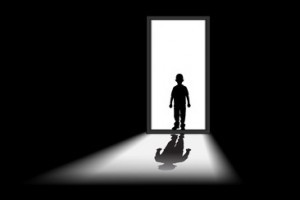Human rights lawyers are preparing to take legal action against the alleged abuse of a chill-out room in a school where the practice is said to have traumatised children.
 Merry Varney and Charlotte Skouby from the human rights team at London law firm Leigh Day have written to the school threatening to take action.
Merry Varney and Charlotte Skouby from the human rights team at London law firm Leigh Day have written to the school threatening to take action.
They claim children were subjected to inhumane and degrading treatment and that the use of the school’s ‘calm room’ for extended periods, without appropriate safeguards in place, was an unlawful act as it deprived pupils of their liberty.
The law firm is acting on behalf of two boys who were pupils at Abbey Hill School in Stoke on Trent, where they were allegedly ‘detained’ alone in the room for prolonged periods. The boys are said to have defecated and urinated in the room which lacked toilet facilities and showed other signs of considerable stress and anxiety. They have since been moved into other specialist autism provision.
Johanna Bickerton, the mother of Jo, a boy who attended the school from 2001 until 2011, said he has been left emotionally scarred by being kept in the “cupboard-sized” chill-out room.
She said: “Although Jo is now more settled, he still shouts out ‘calm room’ and has outbursts where he seems to be experiencing flashbacks to being held in the room and the distress and anxiety this caused him.”
With Jo having left the school three years ago, the threatened legal action highlights the way schools may be called to account for the misuse of chill-out rooms years after a child has been placed in one.
Johanna Bickerton received a letter from Abbey Hill School in 2008 about a proposal to start using a ‘calm room’ to manage her son’s challenging behaviours.
She remembers it being described as a ‘nice chill out room’ and she consented to the use of a calming environment in appropriate circumstances as a measure of last resort.
In 2008, when the ‘calm room’ started to be used, she noticed a marked deterioration in Jo’s behavior. This worsened in 2010 when the use of the ‘calm room’ was allegedly increased.
Although the family was told that Jo was ‘kicking off’ at school, his behaviour elsewhere outside of school was described as “exemplary”.
The family is now appealing to other parents to come forward if they believe their children may have been affected by the methods used at the school.
It was a whistleblower from the school, a former teacher, who highlighted how the ‘calm room’ was being used and described pupils crying and wailing in distress while placed in it. Leigh Day has reported that staff at the school made complaints to the local authority several years ago, saying the room was being used inappropriately.
Commenting on the case, Merry Varney said: “Although the use of seclusion and ‘calm rooms’ are recognized, positive tools to use to assist autistic children, these must be used appropriately with effective safeguards in place to prevent inappropriate use.
“Our clients appear to have been placed regularly in a very small room, with little natural light, sparse furniture, and no ability to leave, for an hour or more at a time. Rather than having any calming effect, the periods of seclusion led to significantly increased distress and deterioration in our clients’ behaviour.”
Autism Eye has been running a campaign, ‘Stop the Abuse of Chill-out Rooms’. If you would like to know more about the campaign or you have information that would be of interest to the editor, please contact: gillian.loughran@autismeye.com
Published: 17 August 2014















